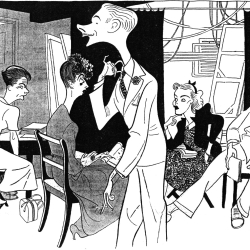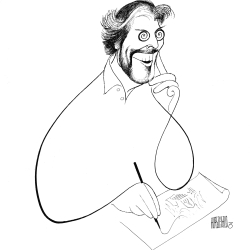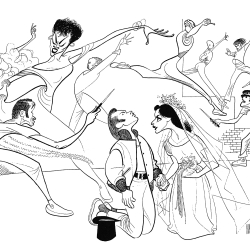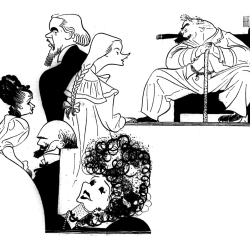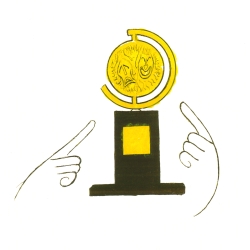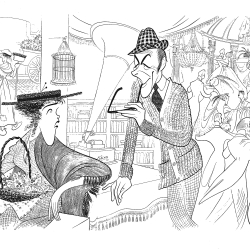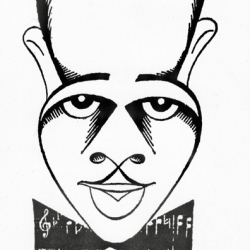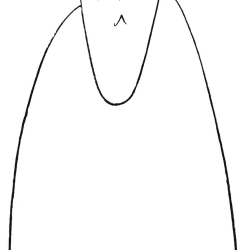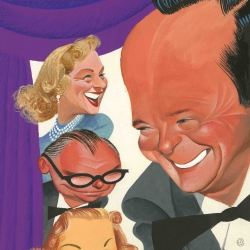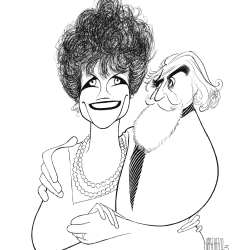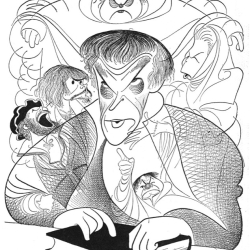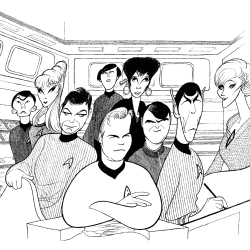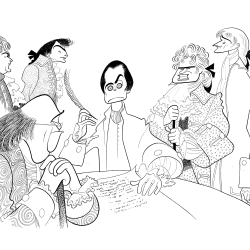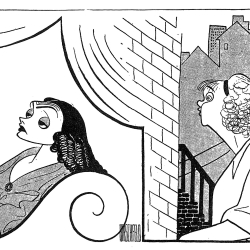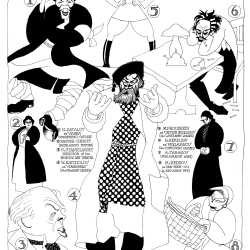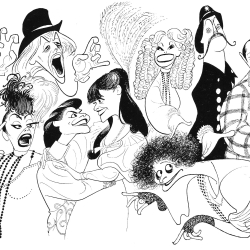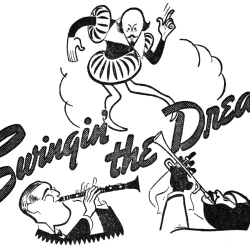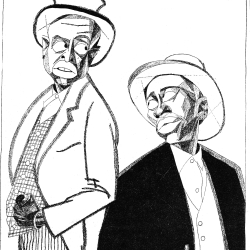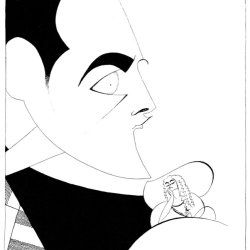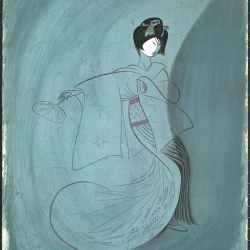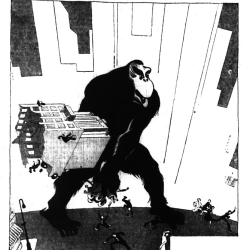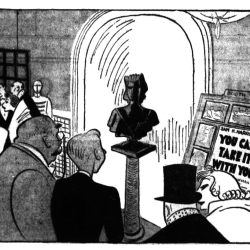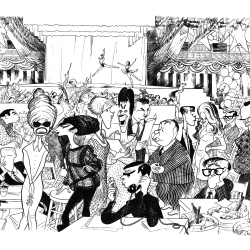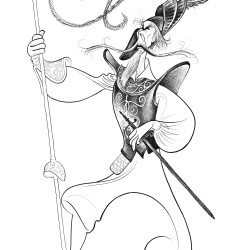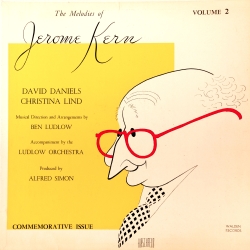The Younger Generation Knows Not Booth
The Hirschfeld Archive includes many things. As one might imagine, there are drawings, paintings, and prints, as well as boxes of newspaper and magazine clippings, and ephemera that has featured his work for nearly 100 years. Among the treasures for those of us in the archive are his account books where he kept meticulous records of what he drew over the years. He recorded the title of a drawing along with the paper he sold it to, how many columns the drawing spread across the page, the date of publication, and what he was paid for it.
We have spent the last two years digitizing all of the newspaper clippings, most of which will soon be uploaded to our website, but in cross checking our records with his account books, we discovered a number of works that we had no information on at all, save for what is in the account book. We took this information down to the Microform room at the New York Public Library at 42nd Street and Fifth Avenue to see what we could find.
In only 3 hours we were able to find 20 new images that we did not have in the archive. One was from the original run of “You Can’t Take it With You” at the Booth Theatre. The show opened to great commercial success on December 14, 1936. This “new” work was published in the Herald Tribune on September 19, 1937, nine months into the run. The show would run for another year after this drawing, and eventually be made into a film in 1938 (which, not surprisingly, Hirschfeld also drew!) Hirschfeld’s first drawing of the production was in the Brooklyn Sunday Eagle on January 31, 1937.
This drawing’s primary focus, however, is not the hit show, but a bust of Edwin Booth in the lobby of the theater named for him, which hosted the show for the majority of its run. The caption for the drawing in the paper was “The Younger Generation Knows Not Booth.” Booth is considered by many historians to be the foremost American actor of the 19th century, though he is most notably overshadowed by his younger brother, John Wilkes Booth, the assassin of President Lincoln. The Booth Theatre, where our Hirschfeld scene takes place, was built in 1913. Producer Winthrop Ames dedicated the theatre to both his father and Booth, who had been devoted to preserving Booth’s legacy. In addition to naming the theatre after the great actor, Ames installed the bust Booth for future generations to admire and reflect on Booth’s accomplishments. The irony of it all, at this production of “You Can’t Take It With You,” a young crowd looks in confusion at the sculpture portrait trying to put a name to the face, a mere 25 years after the theatre was built.
Booth’s bust has recently returned to its place of honor, after the theater’s 2011 renovation. To learn more about the theater, watch Spotlight on Broadway’s short film.
Katherine Marshall
Archives Manager

